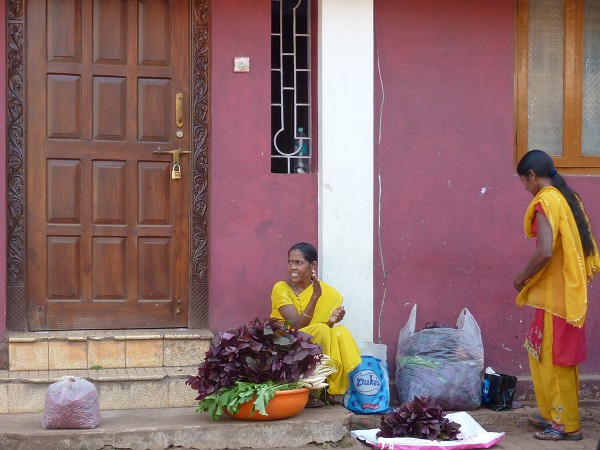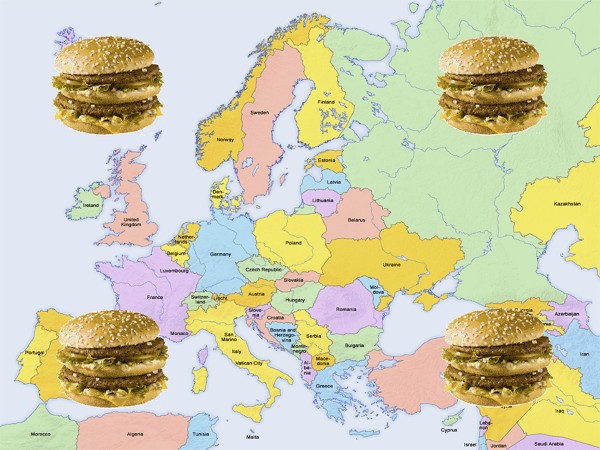 According to a an article in The Guardian, The best news in the world, by the president of the World Bank, Jim Yong Kim, there has been a dramatic fall in global poverty over the past two decades. The number of people in extreme poverty is projected to fall this year to below 10% of global population for the first time. This has been made possible, he claims, by unprecedented economic growth, especially in China.
According to a an article in The Guardian, The best news in the world, by the president of the World Bank, Jim Yong Kim, there has been a dramatic fall in global poverty over the past two decades. The number of people in extreme poverty is projected to fall this year to below 10% of global population for the first time. This has been made possible, he claims, by unprecedented economic growth, especially in China.
But this raises three questions.
The first is whether, in the face of falling growth rates, progress in poverty reduction can be maintained.
The second is whether the World Bank is measuring extreme poverty in the right way. It is now defined as living on less than US$1.90 a day in 2011 prices – until a few weeks ago is was $1.25 in 2005 prices. As a result of this rebasing, global poverty falls from 14.5% of the world’s population (or 1011 million people) under the old method to 14.2% (or 987 million) under the new.
The third question is whether countries can improve their data collection so that a truer estimate of poverty can be made.
As far as the first question is concerned, Kim states that to stimulate growth, ‘every dollar of public spending should be scrutinised for impact. Every effort must be made to improve productivity.’ What is more, three things must happen:
|
|
| • |
Economic growth must lift all people. It must be inclusive. |
| • |
Investment in human beings is crucial – especially investing in their health and education. Malnourished and poorly educated children will never reach their full potential and countries, in turn, will fall short of their economic and social aspirations. |
| • |
We must ensure that we can provide safety nets that prevent people from falling back into poverty because of poor health, economic shocks, or natural disasters. |
As far as the second question is concerned, there are many who argue that $1.90 per day is far too low a measure of the extreme poverty threshold. It is a purchasing-power parity measure and is equivalent to what $1.90 would buy in the USA in 2011.  But, according to the Jason Hickel article linked below, ‘the US Department of Agriculture calculates that in 2011 the very minimum necessary to buy sufficient food was $5.04 per day. And that’s not taking account of other requirements for survival, such as shelter and clothing.’ Peter Edward of Newcastle University, claims Hickell, ‘calculates that in order to achieve normal human life expectancy of just over 70 years, people need roughly 2.7 to 3.9 times the existing poverty line.’
But, according to the Jason Hickel article linked below, ‘the US Department of Agriculture calculates that in 2011 the very minimum necessary to buy sufficient food was $5.04 per day. And that’s not taking account of other requirements for survival, such as shelter and clothing.’ Peter Edward of Newcastle University, claims Hickell, ‘calculates that in order to achieve normal human life expectancy of just over 70 years, people need roughly 2.7 to 3.9 times the existing poverty line.’
But even if living on below $1.90 a day is defined as extreme poverty, it is important not to see the problem of poverty as having been solved for people who manage to achieve an income slightly above that level.
The third question is how to improve data. There is a paucity and unreliability of data in many developing countries. According to Kim:
Our report adds that data is sparse and inconsistent across the region and globally. Some 29 countries around the world had no poverty data from 2002 to 2011, so they could not track their progress. Another 28 had just one survey that collected poverty data during that time.
This is a situation that must change to improve the world’s ability to tackle poverty. In fact, we can’t accomplish our goal if we do not have enough information to know whether people are actually lifting themselves out of poverty. For that we need to address huge data gaps. We need robust data.
Articles
The best news in the world: we have made real progress towards ending extreme poverty The Guardian, Jim Yong Kim (3/11/15)
Could you live on $1.90 a day? That’s the international poverty line The Guardian, Jason Hickel (1/11/15)
Making international trade work for the world’s poorest The Guardian, Jim Yong Kim and Roberto Azevêdo (30/6/15)
Global Poverty Will Hit New Low This Year, World Bank Says Huffington Post, Lydia O’Connor (23/10/15)
The international poverty line has just been raised to $1.90 a day, but global poverty is basically unchanged. How is that even possible? World Bank blogs, Francisco Ferreira, Dean Mitchell Jolliffe and Espen Beer Prydz (4/10/2015)
Why Didn’t the World Bank Make Reducing Inequality One of Its Goals? World Bank blogs, Jaime Saavedra-Chanduvi (23/9/13)
$1.90 Per Day: What Does it Say? Institute for New Economic Thinking, Rahul Lahoti and Sanjay Reddy (6/10/15)
Reports and papers
The Role of Trade in Ending Poverty WTO and World Bank (2015)
Poverty in a Rising Africa World Bank (1/10/15)
Ending extreme poverty and sharing prosperity: progress and policies World Bank, Marcio Cruz, James Foster, Bryce Quillin and Philip Schellekens (October 2015)
Questions
- Explain how the World Bank calculates the extreme poverty line.
- Why, if the line has risen from $1.25 per day to $1.90 per day, has the number of people recorded as being in extreme poverty fallen as a result?
- Why has the number of people in extreme poverty been rising over the years and yet the percentage of people in extreme poverty been falling?
- What policies can be adopted to tackle poverty? Discuss their practicality?
- Are reduced poverty and increased economic growth consistent policy goals? (See the blog post Inequality and economic growth.)
- What are the inadequacies of using income per day (albeit in ppp terms) as a measure of the degree of poverty? What other indicators of poverty could be used and how suitable would they be?
- How could international trade be made to work for the world’s poorest?
 At least once a year The Economist publishes its ‘hamburger standard’ exchange rates for currencies. It is a light-hearted attempt to see if currencies are exchanging at their purchasing-power parity rates. The test is the price at which a ‘Big Mac’ McDonald’s hamburger sells in different countries!
At least once a year The Economist publishes its ‘hamburger standard’ exchange rates for currencies. It is a light-hearted attempt to see if currencies are exchanging at their purchasing-power parity rates. The test is the price at which a ‘Big Mac’ McDonald’s hamburger sells in different countries!
According to this simplified version of the purchasing-power parity theory, exchange rates should adjust so that a Big Mac costs the same in dollars everywhere (see Economics 8th edition Box 25.4).
These Big Mac exchange rates can be used to compare various prices and incomes between countries. The article linked below from The Guardian compares minimum wages between European countries in Big Mac terms.
There are 25 countries across Europe which have minimum wages. A clear pattern of minimum wage rates can be seen: although actual exchange rates understate the purchasing power of incomes in poorer European countries compared to richer ones, minimum wages, even in purchasing-power standard terms, are still higher in the richer countries.
Luxembourg’s minimum wage buys you just about three Big Macs in an hour, while most of northern Europe (and France) between 2–2.5 Big Macs. Moving south, the minimum wage nets about one Big Mac an hour. As we progress east, it begins to cost more than an hour of work on the minimum wage in order to afford a Big Mac.
Of course, there are other factors determining the dollar price of a Big Mac other than the failure of exchange rates to reflect purchasing-power parities. Nevertheless, using the Big Mac index in this way does give a useful preliminary snap shot of differences in what minimum wages can buy in different countries.
Articles
Comparing the minimum wage across Europe using the price of a Big Mac The Guardian datablog, Alberto Nardelli (25/9/14)
Minimum wage statistics Eurostat (Sept/14)
Data
Earnings Database Eurostat
Questions
- What is meant by ‘purchasing-power parity exchange rates’?
- Why may actual exchange rates not accurately reflect the purchasing power of currencies within countries?
- Using the link to Eurostat article above, compare Big Mac minimum wages with (a) actual minimum wages and (b) minimum wages expressed in purchasing-power standard terms.
- Using the links to the Eurostat article and Eurostat data, describe how the proportion of employees earning minimum wages varies across European countries. What factors determine this proportion?
- Using the same links, describe how the monthly minimum wage as a proportion of average monthly earnings varies across European countries. Explain these differences.
 The link below is to an article by Bill Gates, founder of Microsoft. He argues that per-capita GDP is a poor indicator of development, especially in Sub-Saharan Africa.
The link below is to an article by Bill Gates, founder of Microsoft. He argues that per-capita GDP is a poor indicator of development, especially in Sub-Saharan Africa.
The problems with using GDP as an indicator of the level of development of a country are well known and several alternative measures are in common use. Perhaps the best known is the United Nations Development Programme’s Human Development Index (HDI), where countries are given an HDI of between 0 and 1. HDI is the average of three indices based on three sets of variables: (i) life expectancy at birth, (ii) education (a weighted average of (a) the mean years that a 25-year-old person or older has spent in school and (b) the number of years of schooling that a 5-year-old child is expected to have over their lifetime) and (iii) real gross national income (GNY) per capita, measured in US dollars at purchasing-power parity exchange rates (see Box 27.1 in Economics 8th edition for more details).
 But although indicators such as this capture more elements of development than simple per-capita GNP or GNY, there are still serious shortcomings. A major problem is the lack of and inaccuracy of statistics, especially when applied to the rural subsistence and informal urban sectors. The problem is recognised and some countries are trying to address the problem (see the second article below), but the problem is huge. As Gates says:
But although indicators such as this capture more elements of development than simple per-capita GNP or GNY, there are still serious shortcomings. A major problem is the lack of and inaccuracy of statistics, especially when applied to the rural subsistence and informal urban sectors. The problem is recognised and some countries are trying to address the problem (see the second article below), but the problem is huge. As Gates says:
It is clear to me that we need to devote greater resources to getting basic GDP numbers right. … National statistics offices across Africa need more support so that they can obtain and report timelier and more accurate data. Donor governments and international organisations such as the World Bank need to do more to help African authorities produce a clearer picture of their economies. And African policymakers need to be more consistent about demanding better statistics and using them to inform decisions.
Another problem is how you convert data into internationally comparable forms. For example, how are inflation, exchange rates, income distribution, the quality of health provision and education, etc. taken into account?
How GDP understates economic growth The Guardian, Bill Gates (8/5/13)
States’ GDP computation report out soon, says Nigeria statistics bureau Premium Times (Nigeria), Bassey Udo (9/5/13)
Michael Porter Presents New Alternative to GDP: The Social Progress Index (SPI) Triple Pundit, Raz Godelnik (13/4/13)
Questions
- By accessing the Human Development Index site, identify which countries have a much higher ranking by HDP than by per capita gross national income. Explain why.
- Why is expressing GNY in purchasing-power parity (PPP) terms likely to increase the GNY figures for the poorest countries?
- Explain the following quote from the Gates article: ‘I have long believed that GDP understates growth even in rich countries, where its measurement is quite sophisticated, because it is very difficult to compare the value of baskets of goods across different time periods’.
- Why is GNY per capita, even when expressed in PPP terms, likely to understate the level of development in subsistence economies?
- Explain whether the rate of growth of GNY per capita is likely to understate or overstate the rate of economic development of sub-Saharan African countries?
- Why are the challenges of calculating GDP or GNY particularly acute in sub-Saharan Africa?
According to GDP figures released on 15 August, China overtook Japan in the second quarter of 2010 to become the world’s second largest economy. This raises two questions: just what do the GDP figures mean and why has this happened?
The GDP figures are total figures measured in US dollars at current exchange rates. According to these nominal figures, Japan’s GDP was $1.286 trillion in the second quarter of 2010; China’s was $1.335 trillion. This follows several years when Chinese growth rates have massively exceeded Japanese ones.
As far as explanations are concerned, economists look to a number of different factors, including investment policies, relative exchange rates, confidence, deflation in Japan and the scope for catching up in China.
The following podcasts and webcasts look at these questions, as do the articles.
Podcasts and webcasts
 China eyes Japan’s slowing GDP growth BBC News, Roland Buerk (16/8/10)
China eyes Japan’s slowing GDP growth BBC News, Roland Buerk (16/8/10)
 Japan’s economic strategy ‘not happening’ BBC Today Programme Interview with Dr Seijiro Takeshita of Mizuho International banks (16/8/10)
Japan’s economic strategy ‘not happening’ BBC Today Programme Interview with Dr Seijiro Takeshita of Mizuho International banks (16/8/10)
 China’s growth rate slows to 10.3% as lending tightens BBC News, Chris Hogg (15/7/10)
China’s growth rate slows to 10.3% as lending tightens BBC News, Chris Hogg (15/7/10)
China exports jump in May BBC News, Chris Hogg (10/6/10)
 China Overtakes Japan in 2Q As No. 2 Economy Associated Press on YouTube (16/8/10)
China Overtakes Japan in 2Q As No. 2 Economy Associated Press on YouTube (16/8/10)
 China’s economy takes over Japan’s AsianCorrespondent on YouTube (16/8/10)
China’s economy takes over Japan’s AsianCorrespondent on YouTube (16/8/10)
Articles
China overtakes Japan to become world’s second-biggest economy Telegraph, Roland Gribben (17/8/10)
Chinese economy eclipses Japan’s Financial Times, Lindsay Whipp and Jamil Anderlini (16/8/10)
Decoding China’s modesty Financial Times blogs, Jamil Anderlini (17/8/10)
China ‘overtakes Japan in economic prowess’ asiaone news (17/8/10)
China overtakes Japan to become second largest economy in world Irish Times, Clifford Coonan (17/8/10)
China Passes Japan As Second-Largest Economy Huffington Post, Joe McDonald (16/8/10)
Data
World Economic Outlook July 2010 Update IMF (7/7/10)
China Economic Statistics and Indicators EconomyWatch
Japan Economic Statistics and Indicators EconomyWatch
Questions
- Why may simple GDP figures be a poor indicator of the relative size of the Chinese and Japanese economies?
- If purchasing-power parity figures were used, how would this affect the relative sizes of the two economies? Explain why purchasing-power parity exchange rates are so different from nominal exchange rates in the two countries.
- What impact have the relative exchange rates of the two countries had on economic growth?
- Why are simple GDP figures a poor indicator of living standards?
- What factors will determine whether income inequality is likely to widen or narrow in China over the coming years?
- What factors explain Japan’s low rate of economic growth since the early 1990s? How likely is it that these factors will apply in China in the future?
Trade relations between the USA and China have deteriorated recently. There are two key issues: the exchange rate and trade protectionism.
The Chinese currency, the yuan or renmimbi, since 2005 has been officially pegged to a trade-weighted basket of other currencies. In recent months, however, as the dollar has fallen relative to other major currencies, so too has the yuan. It seems as if the peg is with the dollar, not with the basket. From March to December 2009, the exchange rate index of the dollar depreciated by 16 per cent. Yet the exchange rate between the yuan and the dollar hardly changed. In other words, the yuan depreciated along with the dollar against other world currencies, such as the euro, the pound and the yen. The trade advantage that this was giving to the USA with other countries did not apply to China.
Complaints continued that cheap Chinese goods were flooding into the USA, threatening US jobs and undermining US recovery. The Chinese currency was argued to be undervalued relative to its purchasing-power-parity rate. For example, the July 2009 Big Mac index showed the yuan undervalued by 49% against the dollar (see Economics 7e, Box 25.4 for a discussion of the Big Mac index).
The USA, and other countries too, have been putting diplomatic pressure on the Chinese to revalue the yuan and to remove subsidies on their exports. At the same time various protectionist moves have been taken. For example, on December 31 2009 the US International Trade Commission voted to impose tariffs on the $2.8 billion worth of steel-pipe imports from China. The tariffs would be between 10.4% and 15.8%.
The following articles look at these trade and exchange rate issues. Are we heading for a deepening trade war between the USA and China?
Currency contortions The Economist (17/12/09)
Beijing dismisses currency pressure Financial Times, Geoff Dyer (28/12/09)
China aims for 10pc growth and won’t appreciate yuan The Australian (29/12/09)
Wen stands firm on yuan China Daily (28/12/09)
China’s premier says banks should curb lending BusinessWeek, Joe McDonald (27/12/09)
China insists will reform yuan at its own pace Forexyard, Aileen Wang and Simon Rabinovitch (31/12/09)
US slaps new duties on Chinese steel Financial Times, Alan Rappeport (30/12/09)
Chinese Steel Pipes Face Heavy U.S. Duties BusinessWeek, Daniel Whitten (31/12/09)
The US-China Trade War Is Here The Business Insider, Vincent Fernando (10/12/09)
Year dominated by weak dollar Financial Times, Anjli Raval (2/1/10)
Questions
- Explain what is meant by the ‘purchasing-power-parity (ppp) exchange rate’.
- Why is the yuan (or ‘renmimbi’) undervalued in ppp terms?
- What are the the implications of an undervalued currency for that country’s current and financial account of the balance of payments?
- What would be the implications of a revaluation of the yuan for (a) China and (b) China’s trading partners?
- Discuss Premier Wen Jiabao’s statement, “The basic stability of the renminbi is conducive to international society”.
- What forms of protectionism have been used by (a) China and (b) China’s trading partners? Who gains and who loses from such protectionism?
 According to a an article in The Guardian, The best news in the world, by the president of the World Bank, Jim Yong Kim, there has been a dramatic fall in global poverty over the past two decades. The number of people in extreme poverty is projected to fall this year to below 10% of global population for the first time. This has been made possible, he claims, by unprecedented economic growth, especially in China.
According to a an article in The Guardian, The best news in the world, by the president of the World Bank, Jim Yong Kim, there has been a dramatic fall in global poverty over the past two decades. The number of people in extreme poverty is projected to fall this year to below 10% of global population for the first time. This has been made possible, he claims, by unprecedented economic growth, especially in China. But, according to the Jason Hickel article linked below, ‘the US Department of Agriculture calculates that in 2011 the very minimum necessary to buy sufficient food was $5.04 per day. And that’s not taking account of other requirements for survival, such as shelter and clothing.’ Peter Edward of Newcastle University, claims Hickell, ‘calculates that in order to achieve normal human life expectancy of just over 70 years, people need roughly 2.7 to 3.9 times the existing poverty line.’
But, according to the Jason Hickel article linked below, ‘the US Department of Agriculture calculates that in 2011 the very minimum necessary to buy sufficient food was $5.04 per day. And that’s not taking account of other requirements for survival, such as shelter and clothing.’ Peter Edward of Newcastle University, claims Hickell, ‘calculates that in order to achieve normal human life expectancy of just over 70 years, people need roughly 2.7 to 3.9 times the existing poverty line.’


